Inside Russia's 'Leninka' State Library
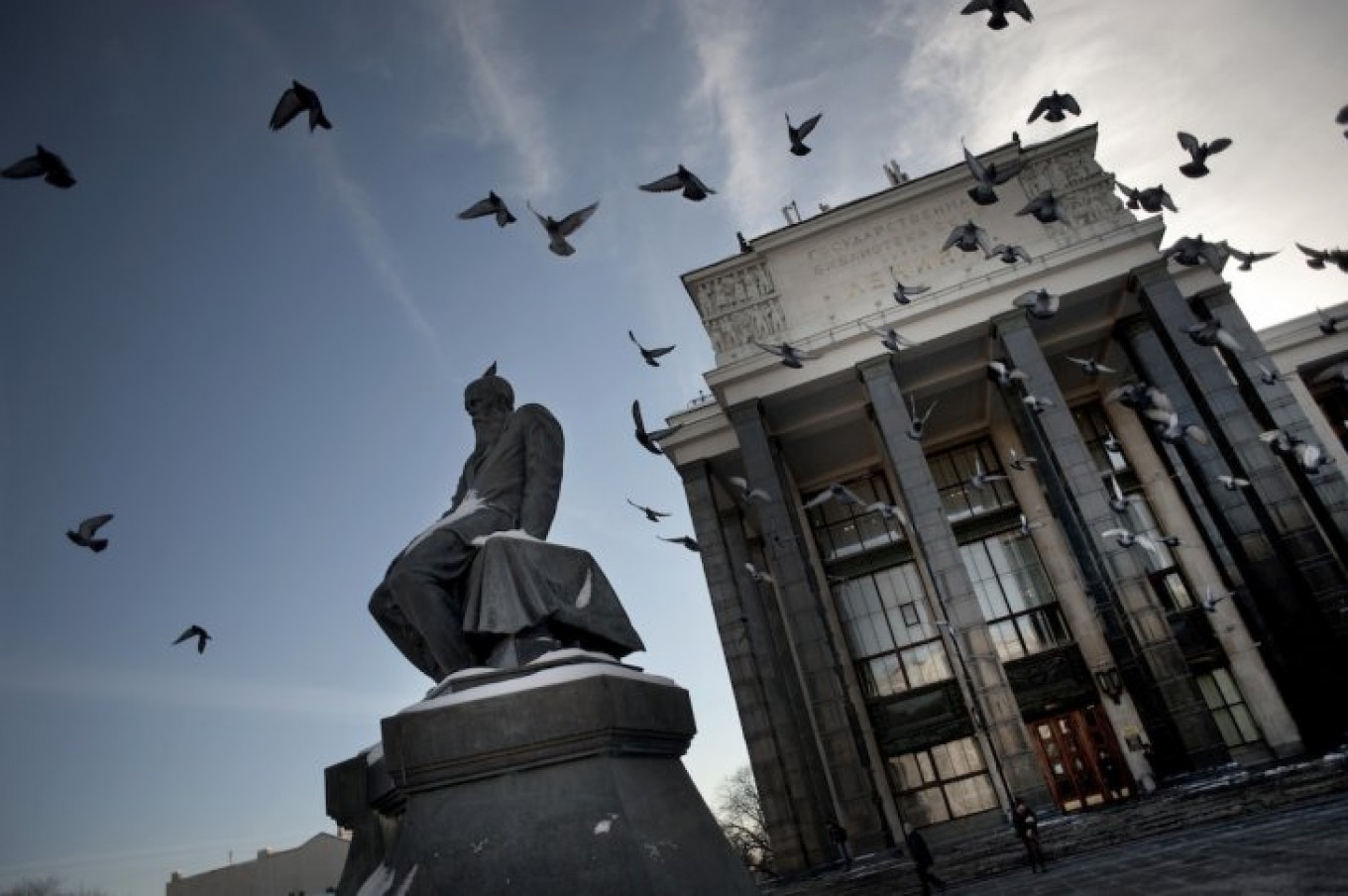
Birds hover over a statue of Mikhail Dostoevsky, located by the entrance of the Leninka library. The statue is cleaned once a year, a task that can take up to two hours.
Founded in 1862, the Russian State Library is home to 45 million books and materials, stored on shelves that equate to a distance of 275 kilometers.
In Soviet times the building was known as the V. I. Lenin State Library —? named in honor of revolutionary leader Vladimir Lenin — and many Russians still affectionately refer to it as the "Leninka."
It has a total of 40 readings rooms, housing 1,732 seats, and is one of the five largest libraries in the world.
On average 4,000 visitors a day peruse its shelves.
Founded in 1862, the Russian State Library is home to 45 million books and materials, stored on shelves that equate to a distance of 275 kilometers.
In Soviet times the building was known as the V. I. Lenin State Library —? named in honor of revolutionary leader Vladimir Lenin — and many Russians still affectionately refer to it as the "Leninka."
It has a total of 40 readings rooms, housing 1,732 seats, and is one of the five largest libraries in the world.
On average 4,000 visitors a day peruse its shelves.
Pascal Dumont / MT

"We will never get rid of the catalog system," explains Arina Galeyeva, a chief librarian. "It is too important and works better than a computerized system."
Pascal Dumont / MT
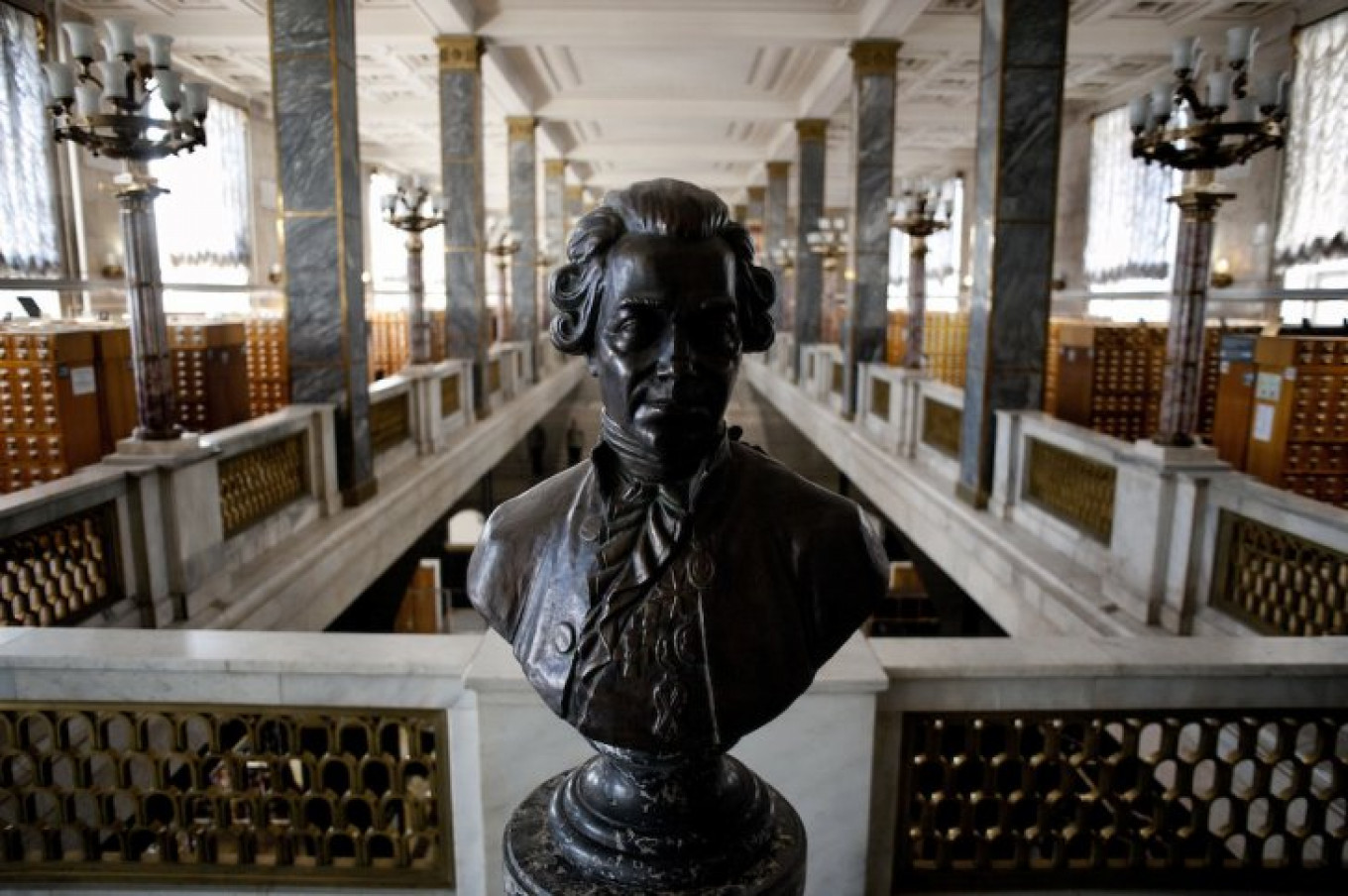
A sculpture of Nikolai Rumyantsev, a Foreign Minister during the Napoleonic wars, is located at the library's main entrance of the library. Rumyantsev was an avid collector of old Russian manuscripts.
Pascal Dumont / MT
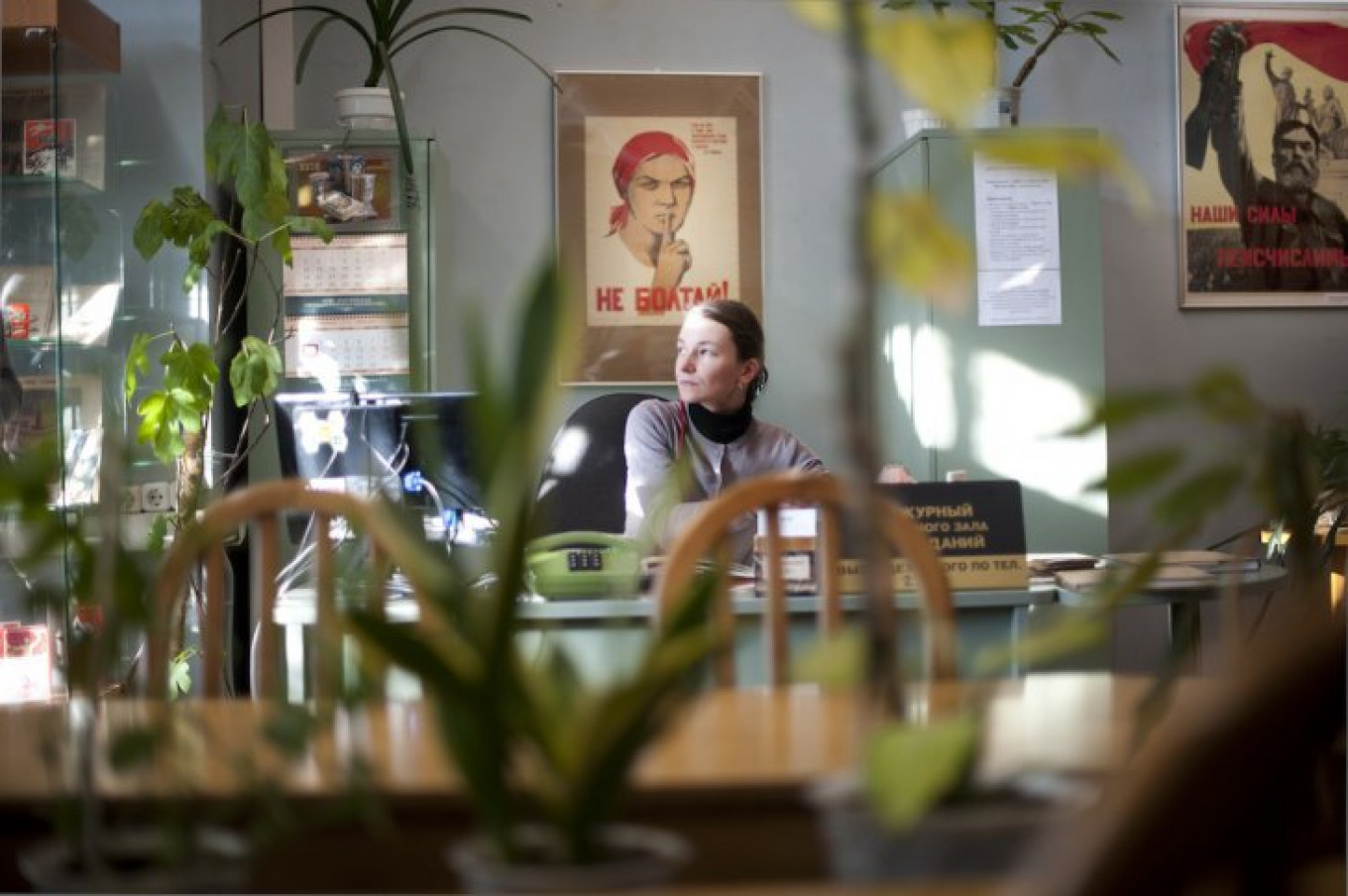
Lyudmila has been working at the library for 15 years. She sits in the visual arts room where Soviet propaganda posters are stored. The sign above her head reads: "Keep Quiet."
Pascal Dumont / MT
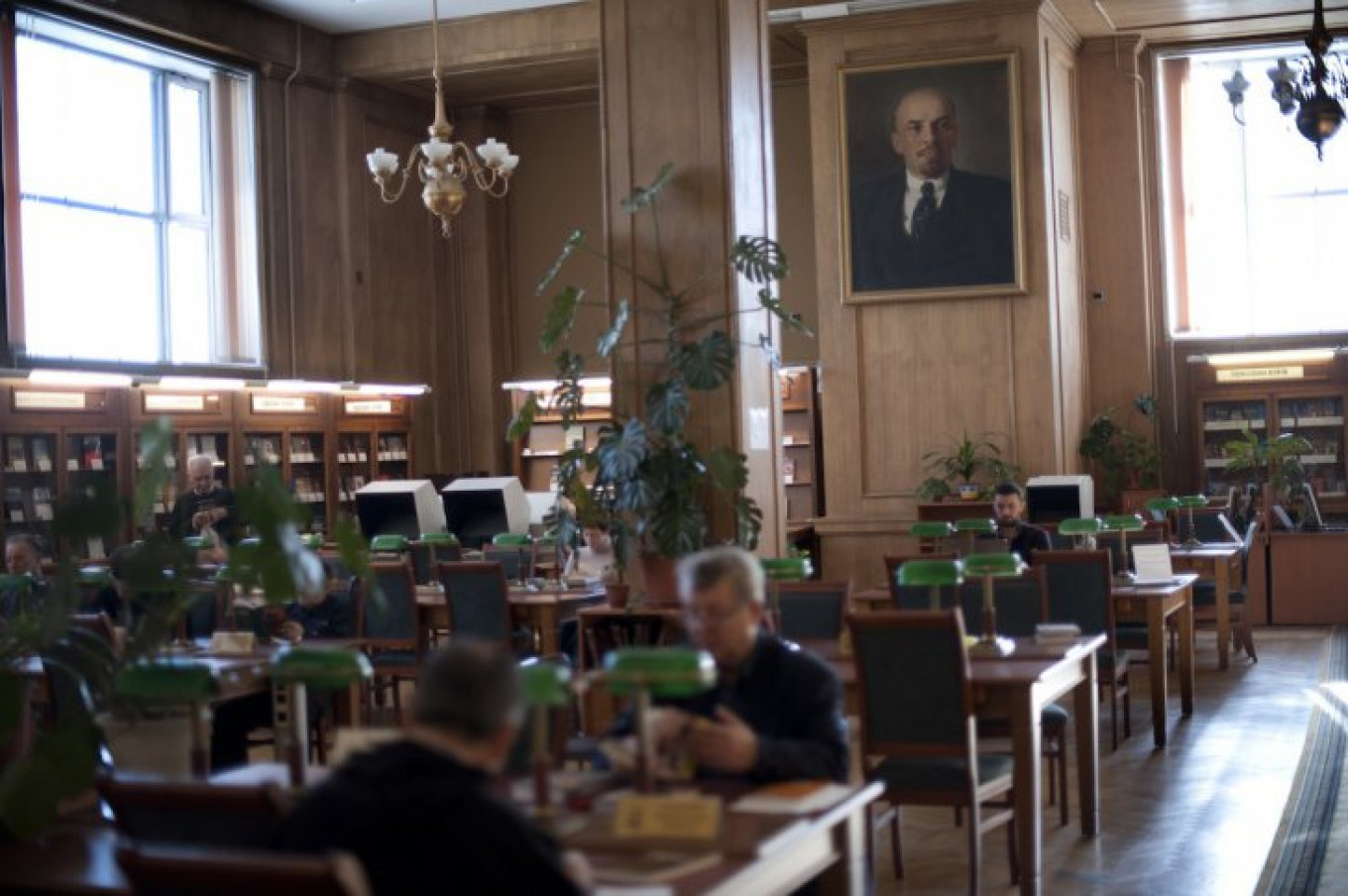
Portraits of Lenin hang in the majority of the reading rooms.
Pascal Dumont / MT
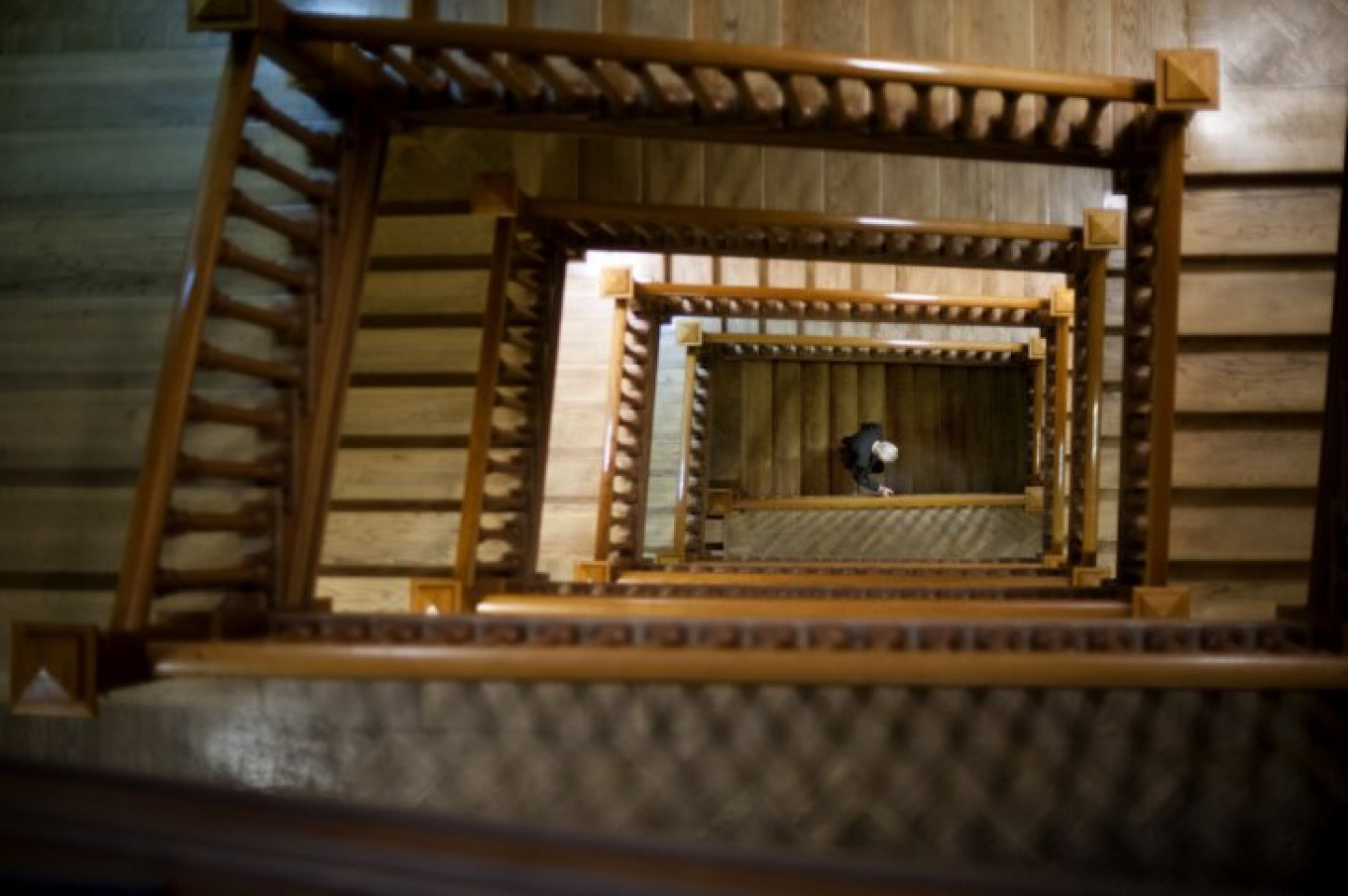
A staircase located in the main building connects five floors through which most of the library's reading rooms can be accessed.
Pascal Dumont / MT

All of the library's 45 million books and other materials have their own index number.
Pascal Dumont / MT
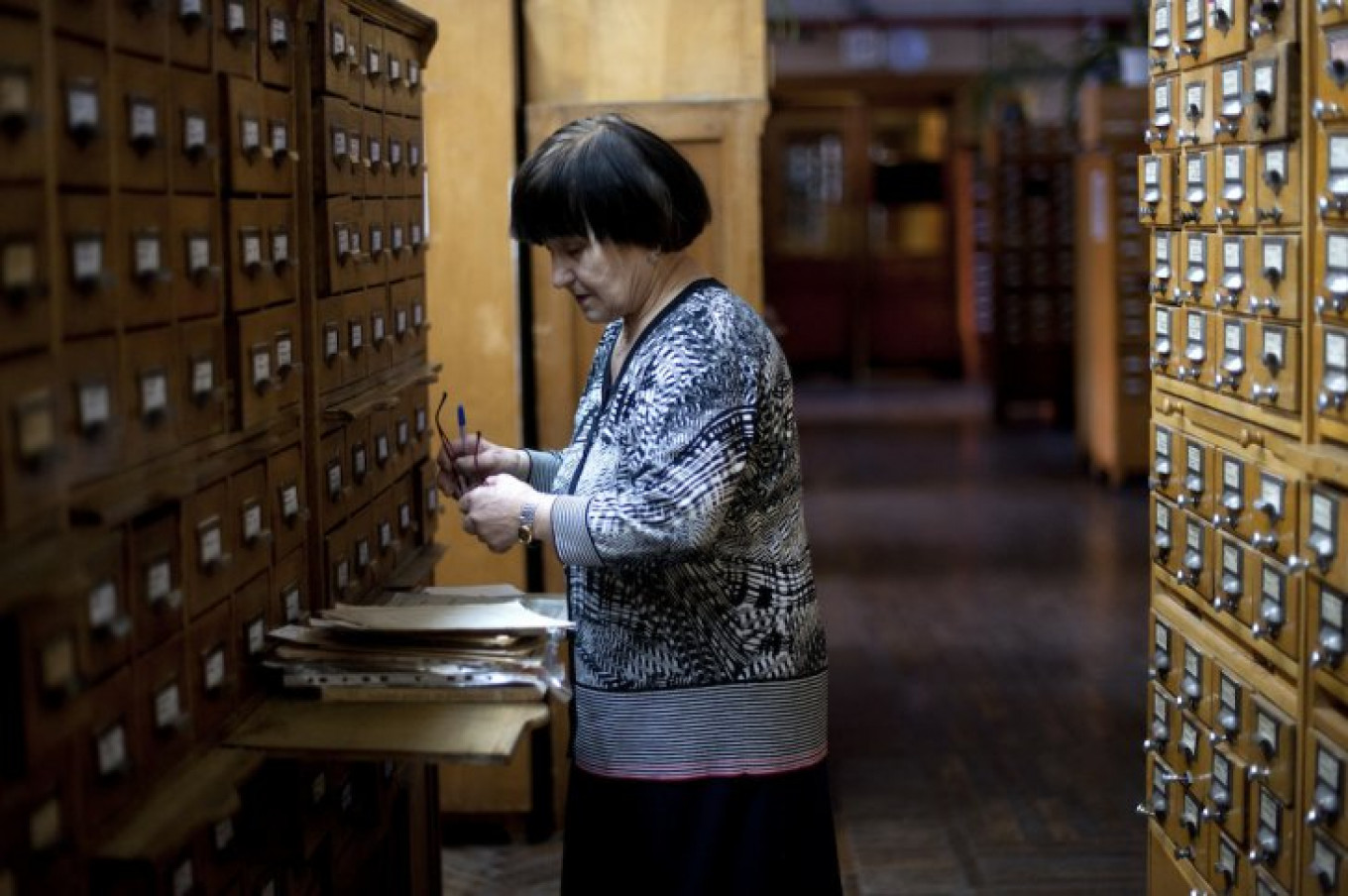
Nina Stepanova has been working as a librarian for 50 years.
"I live here, I work here — this is my motherland," she says.
"I live here, I work here — this is my motherland," she says.
Pascal Dumont / MT
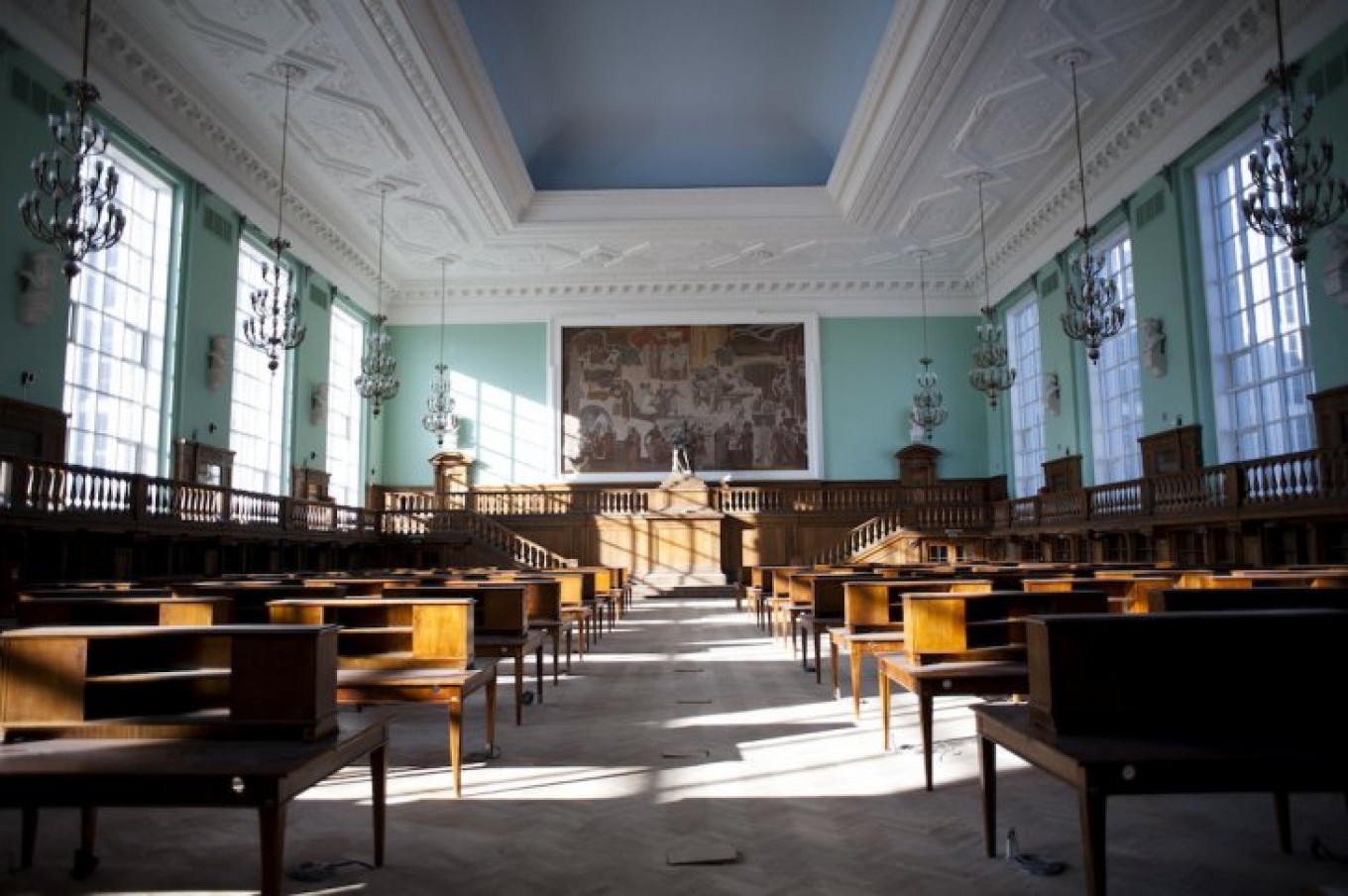
The main reading room was opened in 1957, but has been under reconstruction for the past four years.
Pascal Dumont / MT
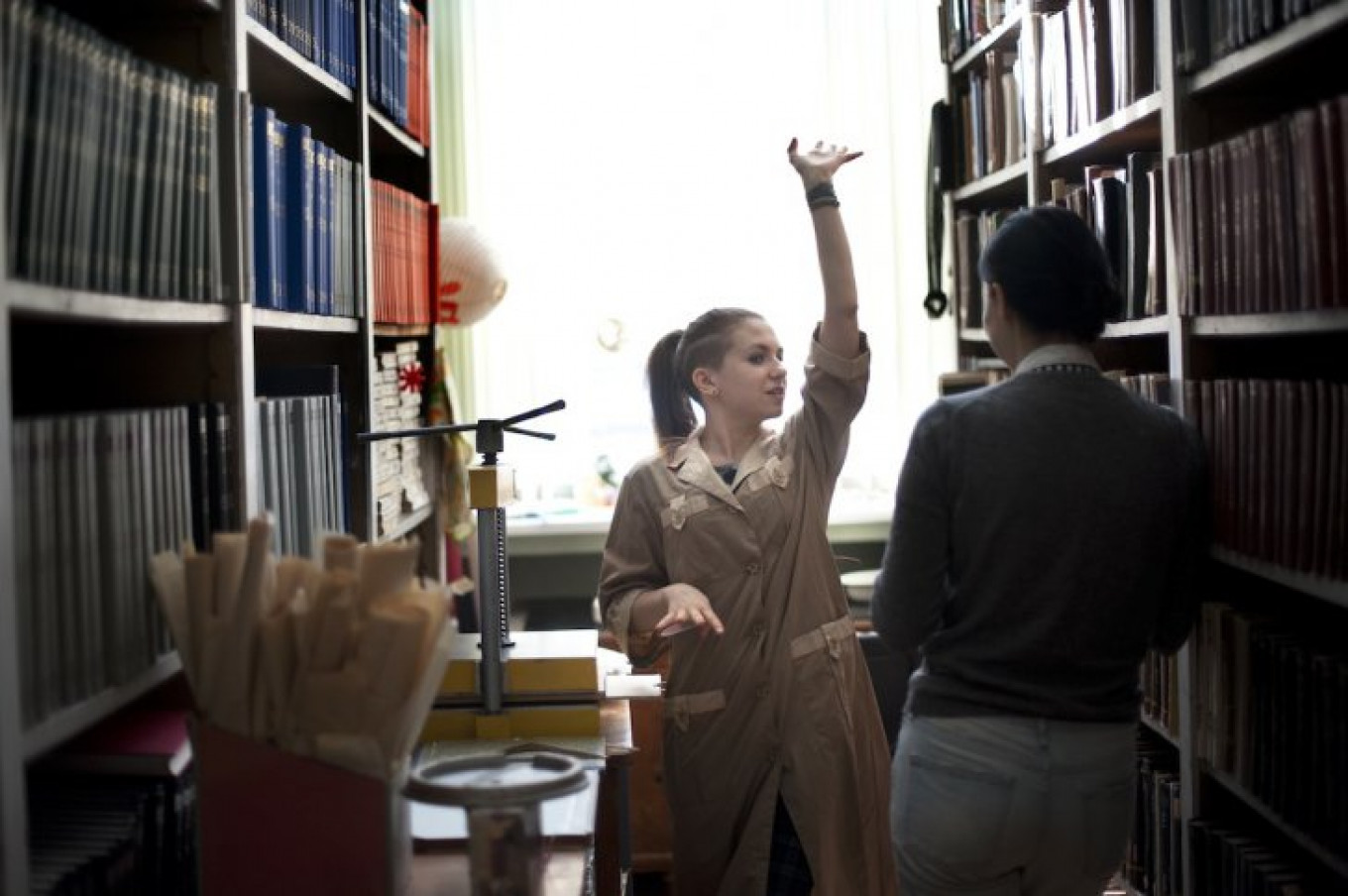
Yekaterina Arakcheyeva, 23, is one of the four people tasked with restoring damaged books.
"The oldest book I restored was from the 17th century,” she says, smiling.
"The oldest book I restored was from the 17th century,” she says, smiling.
Pascal Dumont / MT
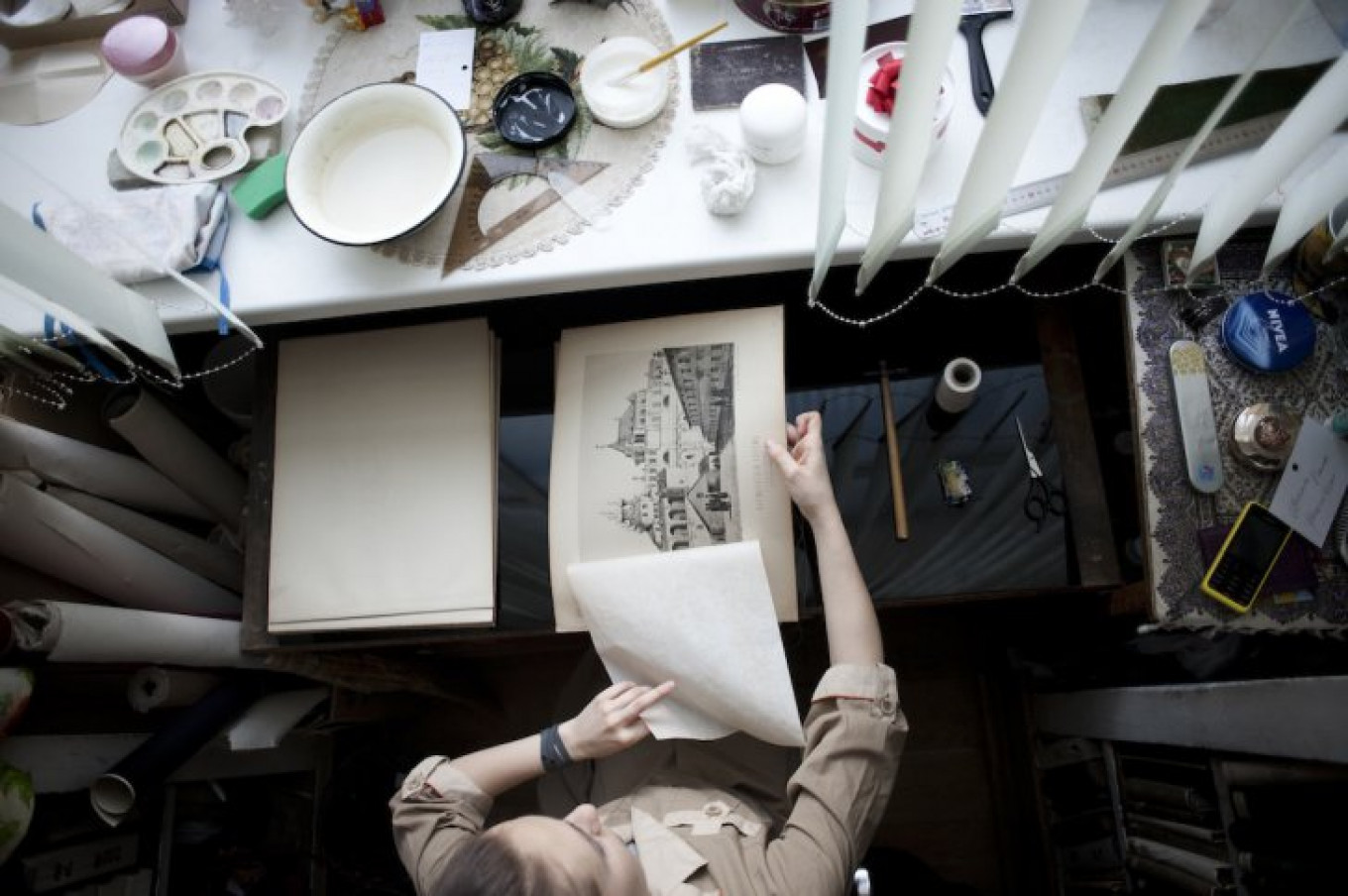
Yekaterina Arakcheyeva, 23, repairing a damaged book.
Pascal Dumont / MT

The elevator of the central book storage building, where most of the 45 millions books and materials are stored.
Pascal Dumont / MT

Alexander has been working as an elevator operator at the central storage building for nearly a decade.
Pascal Dumont / MT
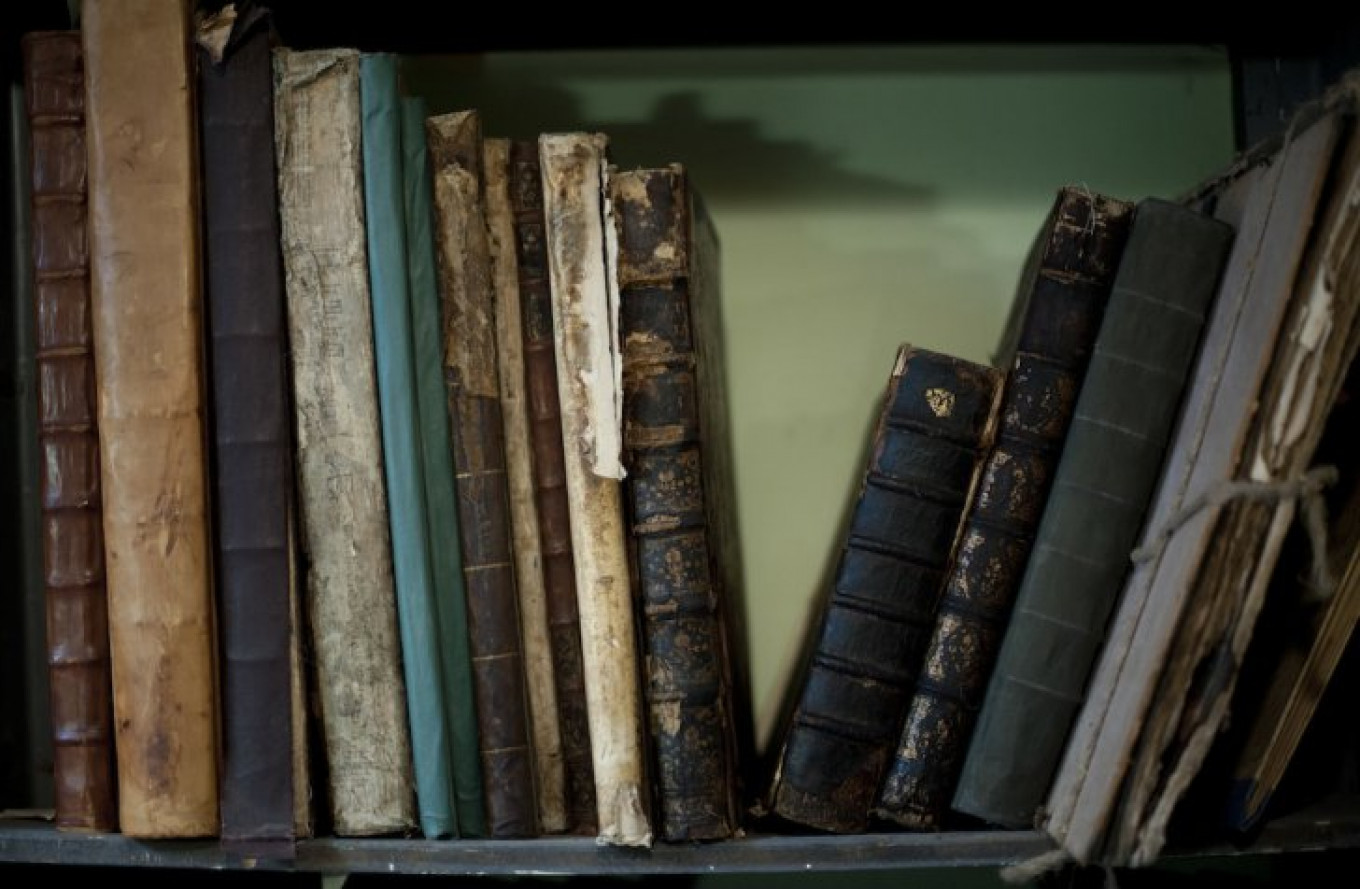
Some of the oldest printed collections date back to the 16th century.
Pascal Dumont / MT
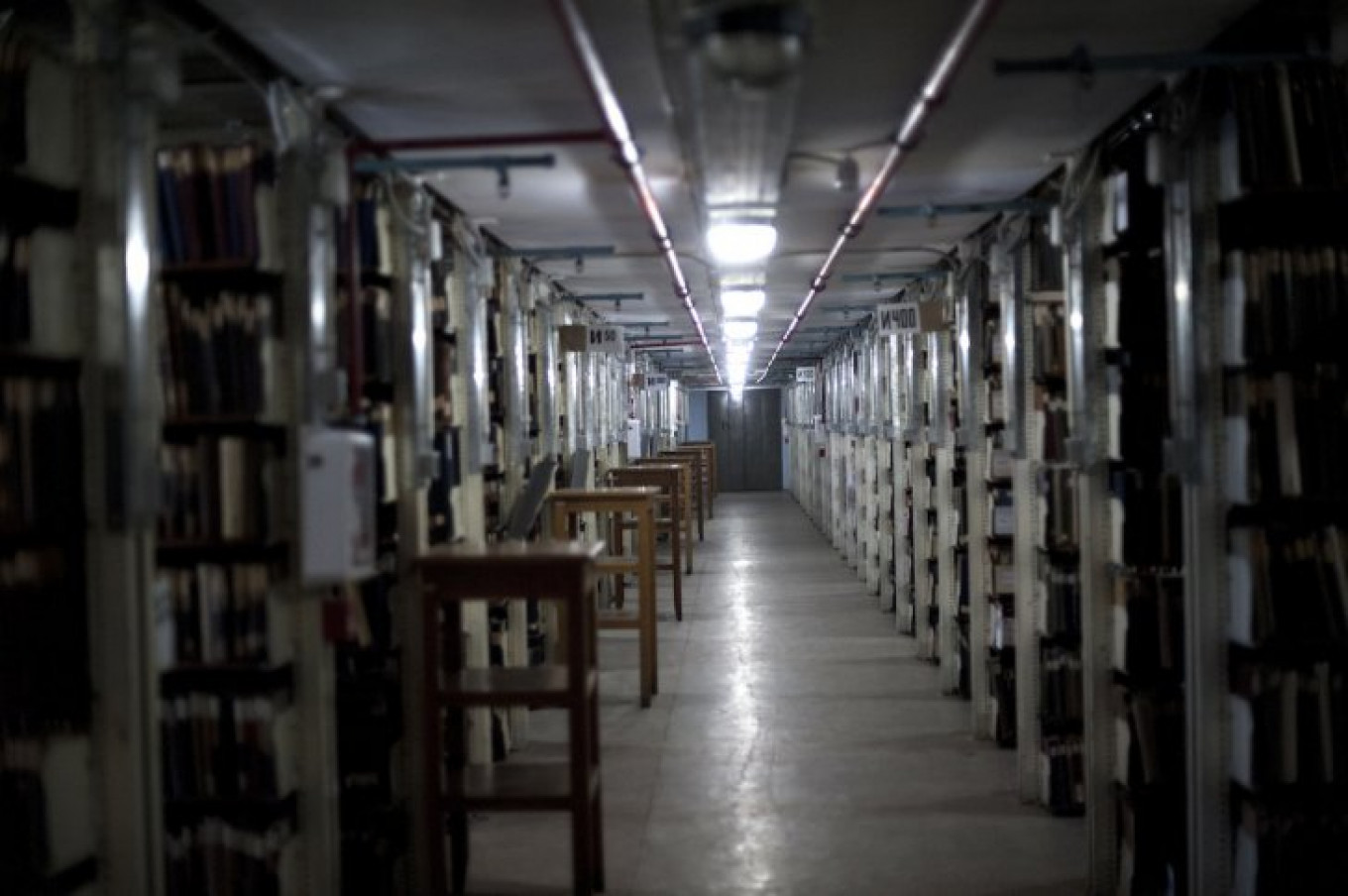
The central storage building is currently filled at its maximum capacity.
Pascal Dumont / MT
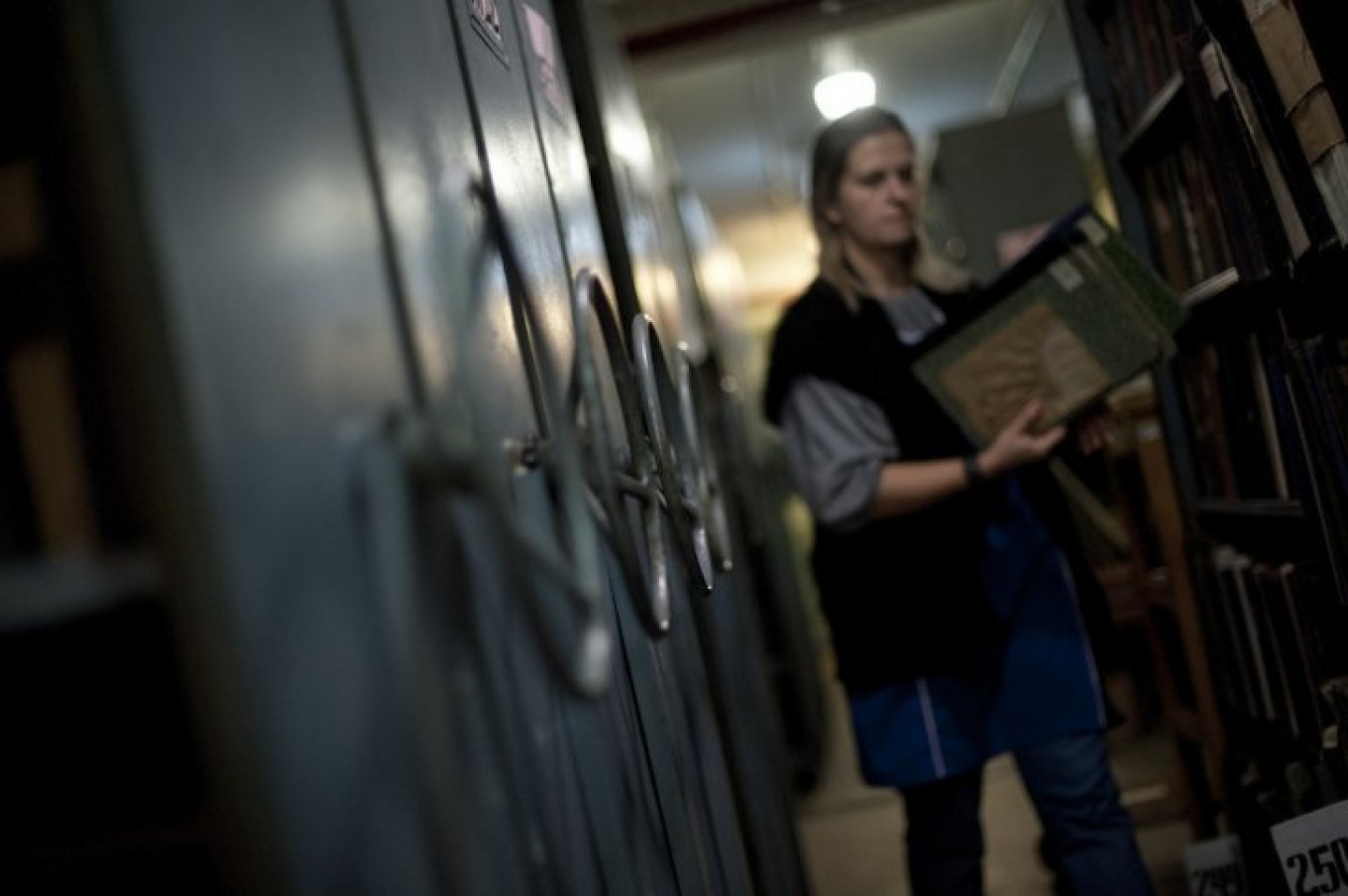
The library is home to books and materials in 367 languages.
Pascal Dumont / MT

A book from the personal collection of Tsar Nicholas I of Russia, which he had given to his wife, Charlotte of Prussia. One of her sons donated the book to the library.
Pascal Dumont / MT
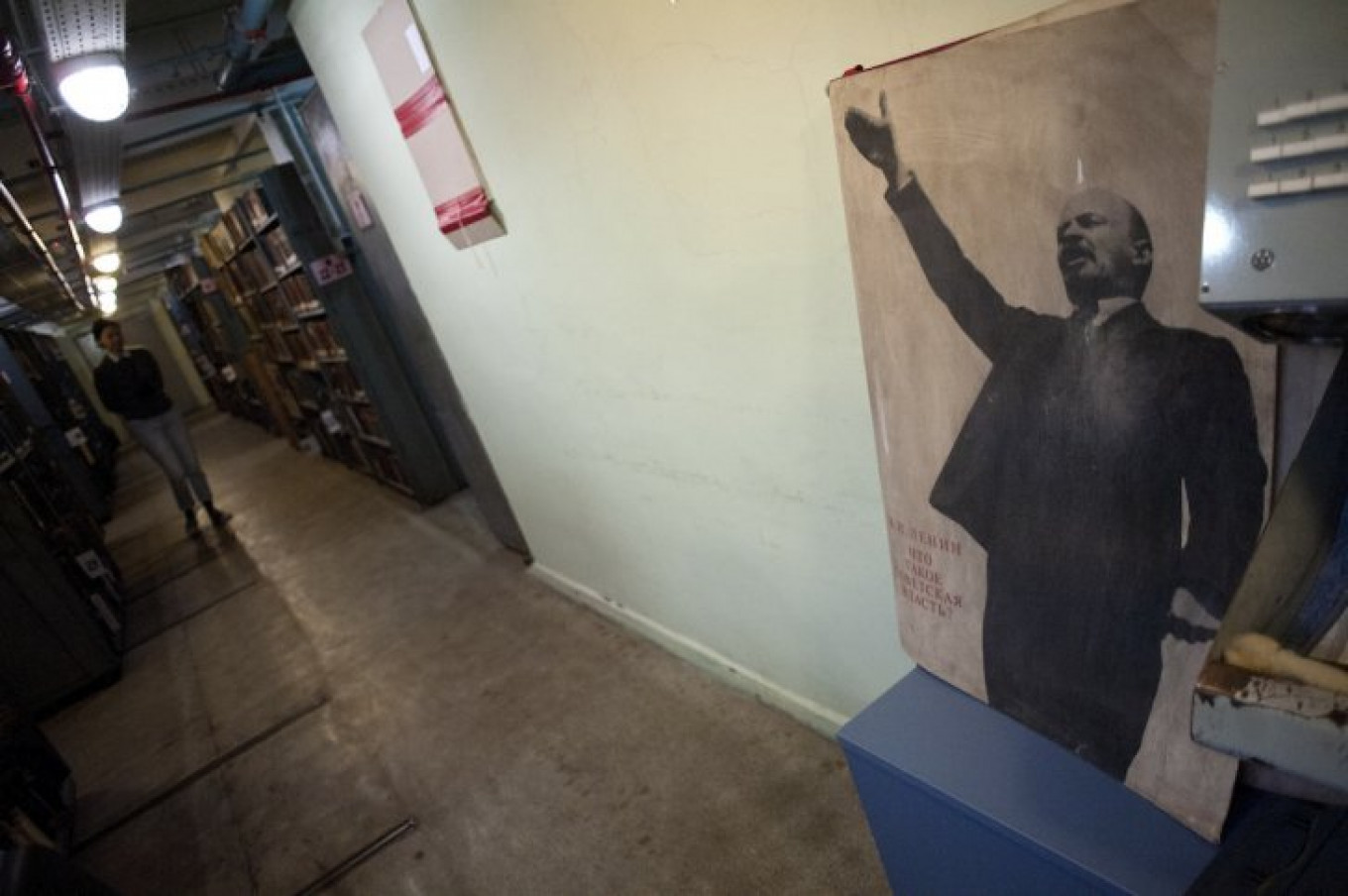
Known as the V.I. Lenin State Library of the U.S.S.R between 1925 and 1992, the library changed its name at the collapse of the Soviet Union. It is now known as the Russian State Library.
Pascal Dumont / MT

